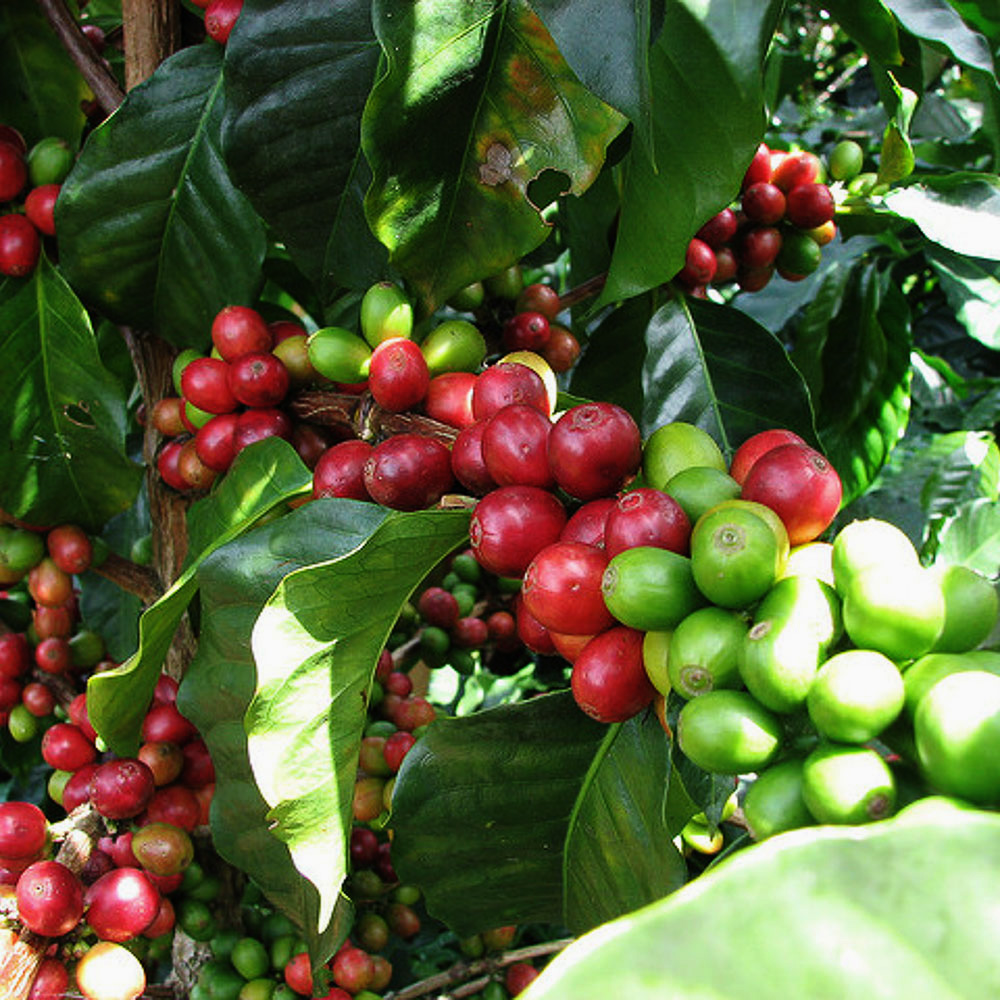Some Castillo varieties are found in Guatemala, where they are better adapted to medium to high altitudes. These varieties are based on a cross between the Timor hybrid and Caturra, and have multi-line resistance to leaf rust.
 Densely packed cherries on a branch of Castillo. Image courtesy of Cafe Imports.
Densely packed cherries on a branch of Castillo. Image courtesy of Cafe Imports.
Multi-line resistance means that several different genes are involved in creating resistance. The plants within the variety carry different mixtures of resistance genes. A fungus can sometimes mutate to overcome resistance provided by a single gene, such as the resistance found in Catimors and Sarchimors. However, if a fungus mutates to overcome a resistance gene in a multi-line resistant plant like Castillo, then only some of the plants will become susceptible, preventing this fungus from spreading as rapidly.
Some taller varieties based on the Timor hybrid can also be found in Guatemala; they include Icatu and Tabi. Tabi, a hybrid with Typica and Bourbon, was specifically developed in Colombia as a rust-resistant variety that was non-dwarfing, so that it could be grown with lower fertiliser input. Because it has similar characteristics to Bourbon, Tabi is often simply referred to as ‘rust-resistant Bourbon’.
More recently, researchers have been working to develop commercial F1 hybrids. An F1 hybrid is the first-generation offspring of two varieties, and it can combine the best qualities of both parents. Because F1 hybrids can’t be grown from seed but must be reproduced from cuttings or cell culture, they are expensive to cultivate.
In 1992, Anacafé took part in a project, along with other Central American countries, to produce new F1 hybrids that combine high yields and excellent cup quality. Three of these have been released so far. Centroamerico (H-1) and Milenio (H-2) are crosses of a Sarchimor with the wild variety Sudan Rume,